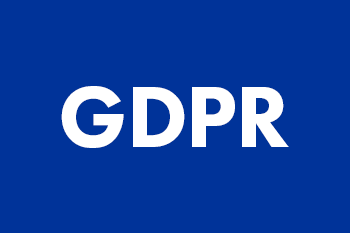Do you consider advice-giving to be part of your role as a business leader?
Even better, do you enjoy giving advice, solving problems, and suggesting best courses of action?
What if a guide wasn’t necessarily someone that tells you what’s the best route forward to reach your end goal, but instead helped you illuminate your path so that you—the employee, the friend, the mentee—could recognize the right path on your own?
This reminds me of a situation I experienced at Fierce recently.
The situation wasn’t unique. I was asked a question about the next steps to take in a small project we were working on.
While I had an idea of how I should respond, I quickly brushed that thought away. I didn’t want to make an error in assuming that I knew the answer and the next best steps. My truth was that I was a rookie and that disqualified me from dishing out some advice to myself.
That little voice of self-doubt gets quite comfortable once you open the door to let it into your mind. So I reached out to my boss only to discover that the next step was actually pretty obvious.
What’s stopping me from seeing the solutions that aren’t as obscure as I think—in the workplace, and even in my personal relationships?
Have a Mineral Rights conversation
In the Coaching program, you’ll walk through the seven steps in a Mineral Rights conversation. This is a conversation model that interrogates reality by mining for increased clarity, improved understanding, and impetus for change.
The goal of the mineral rights conversation is inspired by the literal action of mining: you dig deep into the layers of the ground, continuing to go deeper and deeper past temporary obstacles until you hit the “oil.”
Solutions are often obscured in layers of stratum: confusion, resistance, defensiveness, rational barriers, and emotional slush. You can’t rush through the layers at the same speed you would cruising along an open highway, because you’ll end up getting lodged into one of the first layers.
Have fun getting out of that sticky situation.
At Fierce, we believe that by engaging in deep and authentic conversations with your employees, you can discover the source of an issue, a conflict, a relationship that is falling apart, or an obstacle to completing a project successfully.
Your job as a leader is to tap into your employees and understand what’s really going on. You’re mining for clarity, and not just so that you can understand the issue.
First, connecting on a deeper level (where it’s honest and authentic) can enrich your relationship.
Second, this conversation is also helping your employee understand what’s really going on. And once they’ve reached this moment of clarity, they can then start digging around and realize that the solution is actually quite obvious.
This is what we at Fierce call an apostrophe moment. It’s that flash of blinding clarity. A “duh” moment.
All too often, the solution lies in you. We know it, deep inside, in the gut that we don’t always allow to chat with our head. Just having a safe space where a leader is listening to us in silence and only asking questions that prompt us to speak further allows us to dig deep and have what may be the most meaningful conversation you will ever have: the one with yourself.
Every conversation is with yourself and sometimes it involves other people.
Just taking the time to acknowledge this realization can be enlightening, as well as empowering. It can empower your employees to become more solution-oriented and solution-minded. It’s a cultural shift from a state of co-dependence on a leader or manager to one where there is more collaboration at all levels.
Be a coach rather than an advisor
The value behind the solutions that are generated in these conversations is that they are self-generated. It promotes self-actualization and contributes to the employee’s personal and professional development. As the leader, your job is to create the space for this conversation to happen. Ask the questions, listen, and let your employees create the solution.
They’ll come up with their own advice and it will be just what they need to hear.
Your job is to be the coach, not the advisor.
That process of digging deep and mining for the solution can be challenging. It’s tough to interrogate my own reality.
But if you don’t find solutions, you get stuck in a rut. And if you don’t have the conversation, chances are you probably won’t find the right solution on your own.
So how can a leader—acting as a coach rather than all-omnificent, advice-giver—prompt the conversation so that the mining can commence?
Ask clarifying questions
Have you ever heard of open-ended questions? These are questions that can’t be answered with a mere “yes” or “no”. Instead, they prompt everyone who is a part of the conversation to dig deeper. They lead to richer conversations that build the relationship and get to the heart of the matter.
The same practice applies to coaching employees to discover their own solutions. By asking leading questions and statements, you can mine for the root issues and, ultimately, the best solution.
For example, instead of asking your employee “have you ever thought about…?” before launching into what you think is an excellent piece of advice, say, “What have you thought about?”
Through this model, the employee is prompted to think: What have I thought about? What do I know? What are the details? What is the impact? How have I contributed to this issue? What do I think the ideal outcome is?
Every conversation that we have is with ourselves, and sometimes it involves other people. Through this conversation, you are not only having a conversation with your employee, you are prompting them to have a conversation with themselves.
Get real with yourself
An essential part of this process involves coming out from behind yourself into the conversation, making it real. Be curious. Challenge yourself to access the context that you have and that you want to believe is real. Your perception of the issue may be very different from that of your employee.
In her bestselling book “Fierce Conversations,” Fierce Founder and CEO Susan Scott talks about both the costs of being real and the costs of not.
“When we are real with ourselves and others, the change occurs even before the conversation has ended,” says Scott. “Insights about who we are and what we really want and need are already at work, rearranging our interior furniture, cleaning our internal closet of unnecessary clutter, revealing the way we must go.”
Ironically, the realities that we hold to be truth can be the very layers of stratum that are inhibiting the realization of the solution. As Scott mentions, they’re internal, so they may be subconscious.
Challenge these realities. Ask yourself why you are bringing these contexts into your current relationships, both at work and at home. Chances are, they are going to impact your ability to problem-solve. This exercise applies to everyone at all levels within an organization.
Ouch. That hurts. But so do growing pains. And uncomfortable is where change happens, where the “aha” happens.
And the brilliant result of a fierce conversation—where the employee is the problem-solver— is that the change that needs to occur (whether a plan of action or a shift in your attitude or perspective on the situation) has changed, within that moment.
How can you empower your employees even further to be problem-solvers in a fierce conversation? Explore the Fierce Coaching program to learn more.
Tags: #Creative Block, #Resistance, #Uninspired






